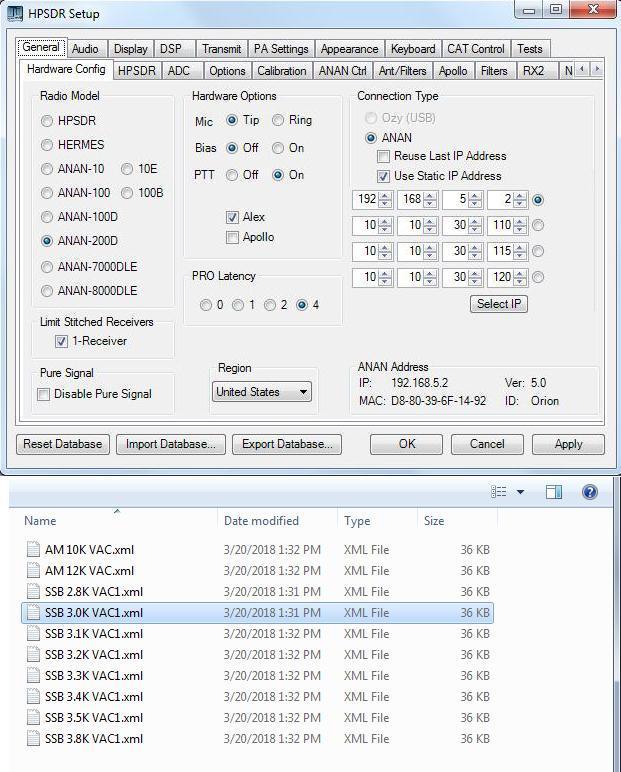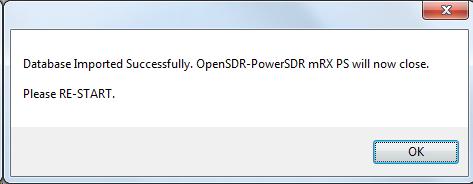
The new
automatic profile utility will import the transmit profile
into the correct part of your database.xml file. Note that
OpenHPSDR mRX PS will shut down and prompt you to restart
OpenHPSDR mRX PS each time you import a transmit profile.

Note that if you are using the MIC IN audio path and a microphone that requires the 20dB boost option you will need to enable that option manually and then save the profile. Also, if the ALC Comp meter does not show several dB of ALC compression during normal speech, an easy way to increase the over-all gain going into to the CFC components would be to increase the Leveler Max Gain setting from the default 5 to a slightly larger value. As an alternative, you could increase the CFC POST GAIN slider until you see the desired ALC Comp response.

Note that if you are using the MIC IN audio path and a microphone that requires the 20dB boost option you will need to enable that option manually and then save the profile. Also, if the ALC Comp meter does not show several dB of ALC compression during normal speech, an easy way to increase the over-all gain going into to the CFC components would be to increase the Leveler Max Gain setting from the default 5 to a slightly larger value. As an alternative, you could increase the CFC POST GAIN slider until you see the desired ALC Comp response.